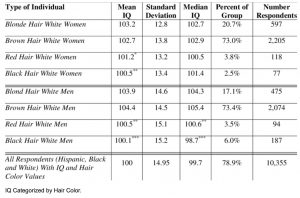Paper 97 Paper 99
See Etymology of Coined Terminology.
Introduction
p1: Egypt A research paper titled “Ancient Egyptian mummy genomes suggest an increase of Sub-Saharan African ancestry in post-Roman periods” was published by Nature Communications in 2017. From the abstract: “The samples recovered from Middle Egypt span around 1,300 years of ancient Egyptian history from the New Kingdom to the Roman Period. Our analyses reveal that ancient Egyptians shared more ancestry with Near Easterners than present-day Egyptians, who received additional sub-Saharan admixture in more recent times. This analysis establishes ancient Egyptian mummies as a genetic source to study ancient human history and offers the perspective of deciphering Egypt’s past at a genome-wide level.”
Section 1: The Salem Religion Among the Greeks
p1: See the UBtheNEWS Eyes, Skin, and Hair Color research page.

p2: See cross-reference study: So-Called Scinece +.
See 2017 DNA research report supporting the Aryan invasion of India. See a synopsis of the original report published by The Hindu. See the section on Tonal Languages in the UBtheNEWS Adam and Eve Report.
goddess See cross-reference study: Gender Studies.
p3: Semite etymology: 1847, “a Jew, Arab, Assyrian, or Aramaean” (an apparently isolated use from 1797 refers to the Semitic language group), back-formation from Semitic or else from French Sémite (1845), from Modern Latin Semita, from Late Latin Sem “Shem,” one of the three sons of Noah (Genesis x.21-30), regarded as the ancestor of the Semites (in old Bible-based anthropology), from Hebrew Shem. In modern sense said to have been first used by German historian August Schlözer in 1781.
See Topical Study: Mother Cults.
Section 2: Greek Philosophic Thought
p4: This cross-reference study offers a comprehensive review of how the revelators use galaxy (along with its derivatives) and Milky Way. See Nigel Nunn’s paper Massive Orvonton for a deeper study of this topic and go to this page for a broader appreciation of his scholarship.
goddess See cross-reference study: Gender Studies.
p5: Pindar See Wikipedia: Pindar.
p8: thinking vs. believing Compare with: (101:1.3) The divine spirit makes contact with mortal man, not by feelings or emotions, but in the realm of the highest and most spiritualized thinking. It is your thoughts, not your feelings, that lead you Godward.
Section 3: The Melchizedek Teachings in Rome
p2: This cross-reference study offers a comprehensive review of how the revelators use galaxy (along with its derivatives) and Milky Way. See Nigel Nunn’s paper Massive Orvonton for a deeper study of this topic and go to this page for a broader appreciation of his scholarship.
p3: goddess See cross-reference study: Gender Studies.
p4,5: See Topical Study: Mother Cults.
Section 4: The Mystery Cults
p1: common people See subtopic: “Were the Alpheus twins subnormal?” For the larger context into which this study falls, see the Topical Study: Genetic Introductions, Mutations, and Evolution: a Urantia Book perspective.
Section 5: The Cult of Mithras
Section 6: Mithraism and Christianity
p1: See Robert Sarmast video on “The Urantia Religion – Power of Symbolism.” List of quotes used in his presentation.
Section 7: The Christian Religion
p6: cosmology appears in fourteen paragraphs: (12:9.3), (55:5.6), (56:10.2,3,8), (94:11.12), (94:12.1), (98:7.6), (99:4.13), (101:1.5), (101:4.1,2,5), (111:4.4).
p11: See Topical Study: Genetic Introductions, Mutations, and Evolution: a Urantia Book perspective re: a moral framework for the study.
Additional notes:
Matthew Block suggests that the following authors were influential in writing of this Paper and has prepared a parallel chart:
William Kelley Wright, Ph.D., A Student’s Philosophy of Religion (New York: The Macmillan Company, 1922, 1935) Philosophy Documentation Center page. Hathi Trust Digital Library copy.
Lewis Browne, This Believing World: A Simple Account of the Great Religions of Mankind (New York: The Macmillan Company, 1926) Wikipedia page: Browne.
E. Washburn Hopkins, Ph.D., LL.D., Origin and Evolution of Religion (New York: Yale University Press, 1923) Wikipedia page: Hopkins.